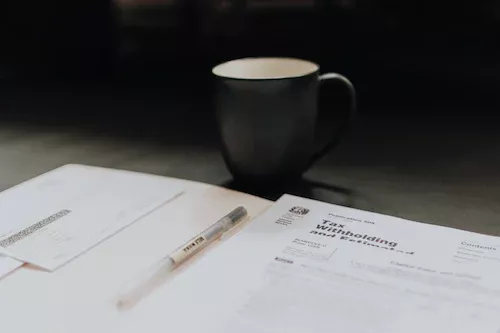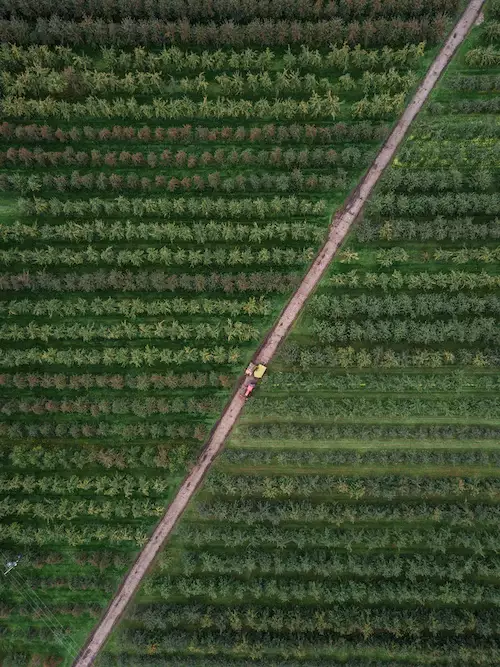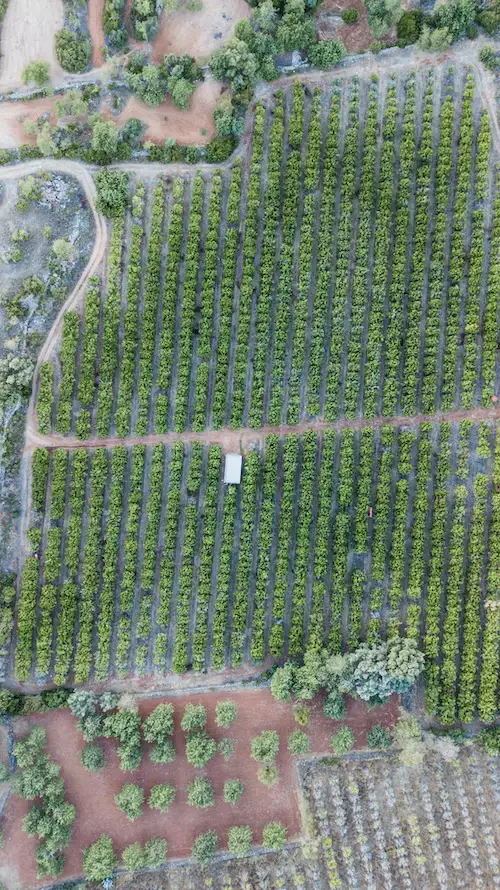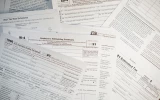7 Smallholding Tax Benefits Explained (US & UK)
Tax time can be confusing, but thankfully there are several smallholding tax benefits available to both US and UK smallholders. In this article, we'll explain the seven most important smallholding tax benefits that you should be aware of and how you can use them to your advantage.
Both the US and the UK offer incentives that can help save money on tax bills. The benefits also include deductions for business expenses, capital allowances, supplies, repairs, and agricultural relief, as well as other reliefs that can be claimed depending on the specific circumstances.
Let’s dig into a deeper understanding of the tax benefits on US and UK smallholdings. Find out more about how these advantages help smallholders.
Summary
- Seven smallholding tax benefits are available to smallholders in both the US and the UK.
- These include deductions for agricultural expenses, business property relief, and the rural land exemption.
- Smallholders can take advantage of each benefit to maximize tax savings.

On this page:
7 Smallholding Tax Benefits In the UK and the US
This list outlines the top seven tax benefits of smallholdings, covering everything from capital allowances to business rate relief. Whether you're just starting, or a seasoned pro, this list has something for everyone. So, let's explore the tax benefits available to smallholders!
1. Smallholdings can get incentives to save money on tax bills
In the UK:
- The Annual Investment Allowance (AIA) allows smallholders to claim relief on capital expenditures up to £1 million in the tax year.
- The Enterprise Investment Scheme (EIS) allows smallholders to claim relief on investments of up to £1 million in a tax year.
- The Seed Enterprise Investment Scheme (SEIS) allows smallholders to claim relief on investments of up to £150,000 in a tax year.
In the US:
The Section 179 deduction is available to smallholders who purchase qualifying equipment and software used in their business.
- This allows them to deduct the full purchase price of the equipment or software up to a certain limit.
- The Qualified Business Income Deduction (QBI) allows smallholders to deduct up to 20% of their business income, which can significantly reduce their tax bills.
- The Research and Development Tax Credit (R&D) is available to smallholders who make significant investments in research and development activities. This credit can be used to offset up to 20% of the cost of research and development activities.
2. Smallholdings have deductions for business expenses
In the UK:
The UK's smallholding deductions for business expenses on tax benefits allow smallholders to claim a tax deduction of up to £2,500 for certain business expenses. These expenses can include:
- the cost of buying, renting, and leasing land
- the cost of maintaining and improving the land
- capital expenditure associated with the purchase of machinery and equipment
- animal feed
- veterinary bills
- the cost of hiring a farm worker or contractor
- the cost of registering a smallholding with the relevant authorities
In the US:
Smallholding businesses can take advantage of tax benefits by deducting certain business expenses from their taxable income of up to $5,000. These deductions may include:
- the cost of business-related supplies
- advertising
- travel expenses
- wages paid to employees
- costs of health insurance for employees
- costs of any property used for the business, such as office equipment, furniture, and vehicle costs associated with operating the business, such as insurance premiums, utilities, and rent or mortgage payments
3. Smallholdings have capital allowances for smallholding activities
In the UK:
The UK offers Capital Allowances for Smallholding Activities conducted on a smallholding that meets certain criteria. These criteria include that the smallholding must be a single parcel of land that is used solely for smallholding activities, the land must not exceed more than 1 hectare (2.47 acres) in size, and the activity must be conducted on a commercial basis.
The amount of capital allowances available to a smallholder is up to a maximum of £50,000 per year. This allowance can be claimed on items such as fencing, sheds, outbuildings, and other capital items related to the smallholding activity. The allowance is deducted from taxable profits and is available for up to eight years.
In the US:
The US Internal Revenue Service (IRS) allows certain smallholders to claim a yearly tax benefit due to the capital allowances they incur while conducting smallholding activities. This tax benefit is known as the Capital Gains Exclusion and it allows smallholders to exclude up to $250,000 of capital gain from their taxable income.
The capital allowance must be directly related to a smallholding activity and must be incurred within the same year. This benefit is only available to individuals who conduct their smallholding activities on their property and who have an adjusted gross income of less than $250,000.

4. Smallholdings can have supplies for smallholding resources
In the UK:
The relief is available on the first £5,000 of profits from the smallholding. This can be claimed in the tax year in which the profits are made. These supplies must be used to produce the goods or services for sale and must be provided to the smallholding by a person or business with whom the smallholder has a contractual agreement. Relief is available on the first £50,000 of qualifying supplies made to the smallholding.
In the US:
The Internal Revenue Service (IRS) allows farmers to deduct the cost of labor, fuel, and other costs associated with the production of agricultural products. Equipment used in agricultural production, such as tractors, combines, and other machinery, is also deductible up to $500,000 per year.
5. Smallholdings can get paid repairs on smallholding structures
In the UK:
The tax benefit for repairs on smallholding structures is available up to a maximum of £2,500 in any one tax year and can be claimed as a deduction from the smallholder’s total taxable income. The tax benefit can be claimed for costs incurred in the previous tax year or the current tax year and must be claimed within four years of incurring the expense.
Additionally, smallholding owners in the UK may be eligible for the Annual Investment Allowance (AIA), which allows them to deduct the full cost of certain capital expenditures, including repairs and improvements to smallholding structures, up to a certain limit. As of the 2022–2023 tax year, the AIA limit is £1 million.
In the US:
The tax benefit for repairs on smallholding structures enables smallholders to deduct up to $10,000 (or up to 20% of their total income) for repairs and maintenance to their smallholding structures. This includes buildings and fences, as well as any other structures used to support farming operations. The deduction can be taken in the year the repairs are made.
6. Smallholdings have agricultural relief at different rates
In the UK:
The relief is designed to reduce the amount of inheritance tax (IHT) that must be paid on the transfer of an agricultural business or land to a beneficiary. In general, the following relief rates apply:
- 100% relief for agricultural land and pasture that has been used for agricultural purposes for at least two years.
- 50% relief for woodland that has been used for forestry purposes for at least two years.
- 100% relief for farmhouses, buildings, and cottages that are used for agricultural purposes and are occupied by the owner or a tenant.
In the US:
The smallholding tax benefit in the US allows agricultural operations with gross sales of up to $2,500,000 to receive a 50% reduction in their property tax liability. This benefit is available to farmers and ranchers who own or lease land used for agricultural production and who actively manage the land to produce agricultural products.
The benefit is available to both small and large-scale operations, with no minimum acreage required. The maximum benefit available is $50,000 per year.

7. Smallholdings can get relief for specific circumstances
In the UK:
The smallholding tax benefit offers relief for some specific circumstances. Farmers and smallholders who have retired from their businesses, those who have recently taken up the profession, and those who have suffered hardship due to an animal disease outbreak are all eligible to claim relief.
Retired farmers and smallholders can claim up to £400 in tax relief each year. Those who have recently taken up the profession can claim up to £2,000 in tax relief in their first year of business. For farmers and smallholders who have suffered hardship due to an animal disease outbreak, the UK government will consider extending tax relief up to £7,500.
In the US:
Farmers may be eligible for additional tax relief for specific circumstances, such as farm-related disasters, health insurance costs, and conservation easements. Farmers who enter into a conservation easement may be eligible for a deductible amount of up to 25% of the value of the easement or up to $500,000, whichever is less.


